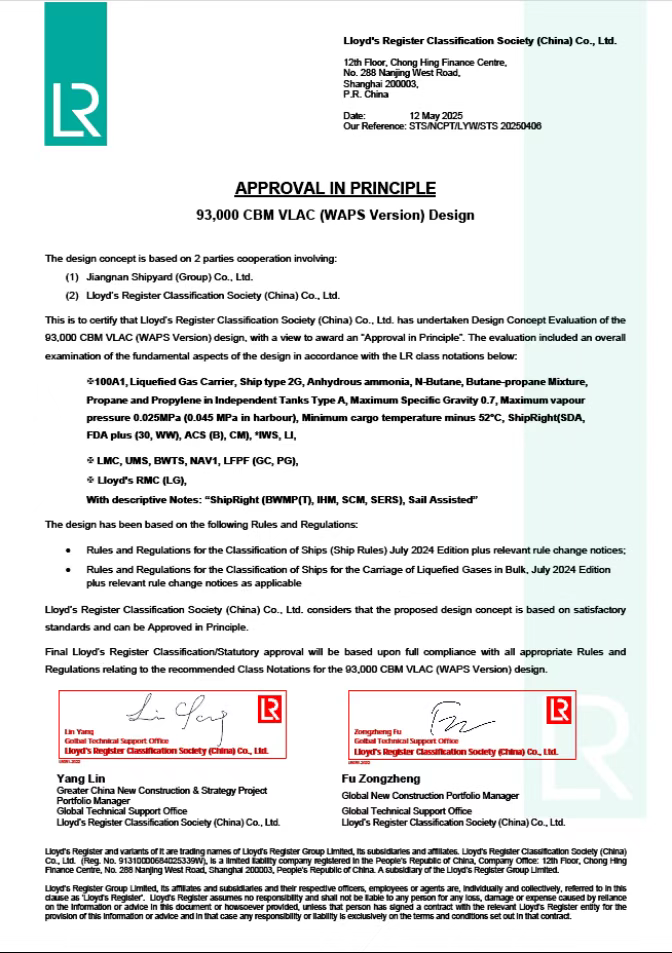Recently, the rotor duct energy-saving technology application scheme for the 93,000 cubic meter Very Large Ammonia Carrier (VLAC) independently developed by Jiangnan Shipyard of China State Shipbuilding Corporation (CSSC) has officially obtained the Approval in Principle (AIP) certificate issued by Lloyd’s Register (LR).

This marks that the global first application of rotor ducts on VLACs has entered a new stage of commercialization. This achievement not only demonstrates the leading strength of Jiangnan Shipyard in the field of ship energy efficiency optimization, but also provides an innovative solution for the low-carbon transformation of the global shipping industry.
Facing the increasingly strict carbon emission regulations of the International Maritime Organization (IMO), Jiangnan Shipyard, in collaboration with LR, has conducted systematic research on various wind-assisted propulsion devices, and finally tailored a dual fixed rotor duct integration scheme for the 93,000 cubic meter VLAC. This scheme can meet the conventional air draft requirements of very large liquefied gas carriers, while providing an alternative solution for blind spot visibility. The application of two fixed rotor ducts is expected to reduce the main engine energy consumption of the vessel by nearly 4%, with a single vessel reducing carbon dioxide emissions by over 1,000 tons annually, achieving a win-win situation in economy and environmental protection.
As a leader in the global liquefied gas ship market, Jiangnan Shipyard has always focused on the technical breakthroughs under the “dual carbon” goal. The certification of the rotor wind tube project on the 93,000 cubic meter ultra-large liquid ammonia carrier not only tested the company’s green design capabilities, but also witnessed an important step taken by Jiangnan Shipyard towards decarbonization. At present, Jiangnan Shipyard is actively studying the application of rotor wind tube technology on more ship types such as LNGC and VLEC to create a standardized energy-saving solution for Jiangnan Shipyard.

Wind-assisted propulsion devices are mainly divided into six categories: rigid sails, rotor sails, soft sails, suction sails, kite sails, and hull sails. Among these, rigid sails, suction sails, and rotor sails are relatively mature in terms of technology, while rotor sails have the highest market share.
The rotor sail is based on the principle of the Magnus effect. When the sail rotates, the airflow on both sides forms a pressure difference due to the speed difference, generating a thrust perpendicular to the wind direction. This converts the wind energy at sea into propulsive force for the vessel, achieving the effect of energy conservation and emission reduction. Compared with other wind-assisted propulsion devices, the current rotor duct technology has high maturity, small wind-receiving area, strong stability, and strong wind direction adaptability, making it the most popular wind propulsion form in the global shipping industry today.


